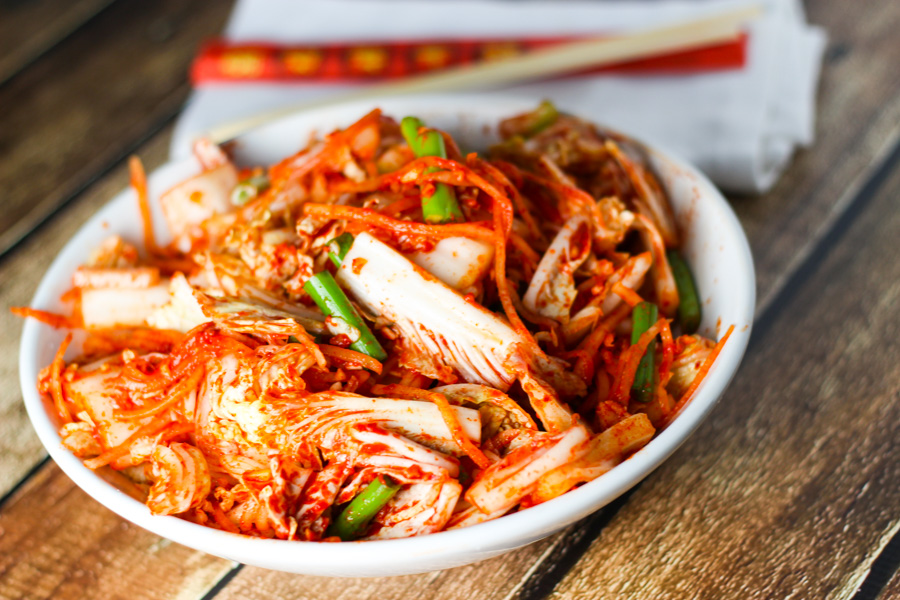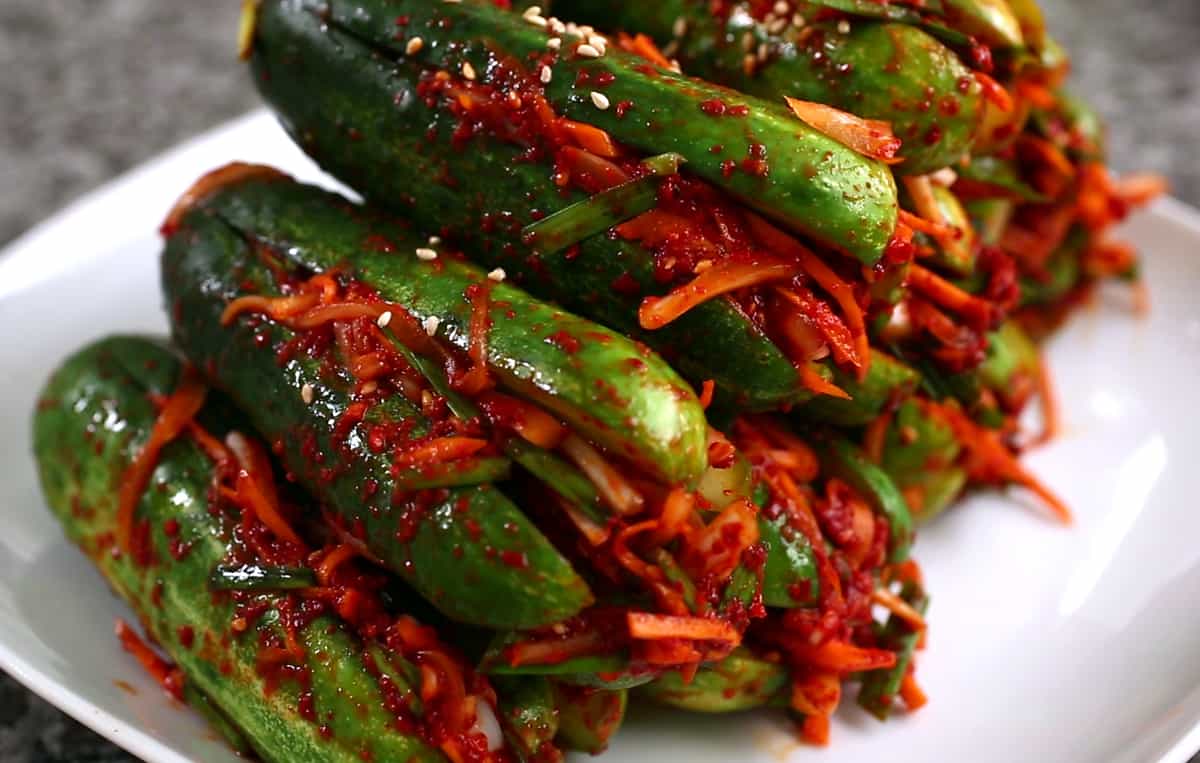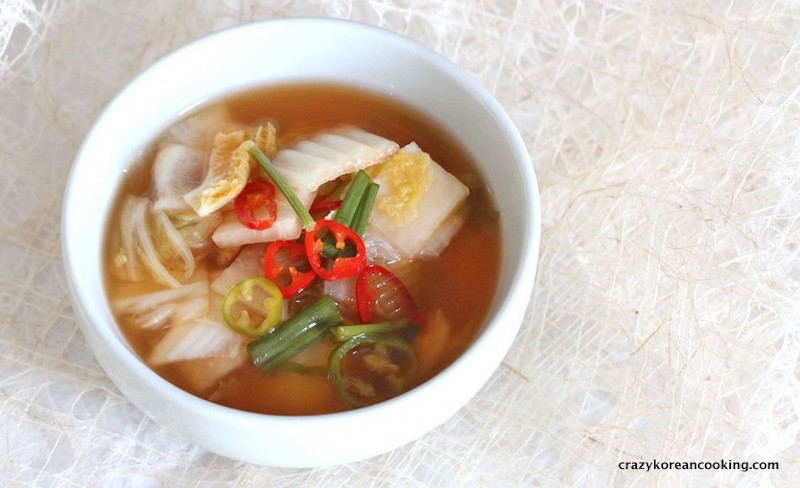South Korea is a land known for many things: K-pop (Korean pop music), K-dramas/K-movies, technology that is practically from the future (you may have heard of a little company called Samsung). And most famously… Kimchi.

Photo courtesy of platingsandpairings.com
Before delving into the deep and fermented world of kimchi, we should probably start with the basics. Kimchi (김치) is a Korean dish traditionally made of fermented vegetables. The most common variety is made with cabbage (pictured above), but today we’re going to talk about the rest of the kimchi family.
1. Oi Sobagi Kimchi (Cucumber Kimchi)

Photo courtesy of maangchi.com
I’m starting with this one because it’s my personal favorite. Oi Sobagi, or cucumber kimchi, is kimchi that’s well…made out of cucumbers. It has the crunchy, fresh, chill pizzazz of cucumbers, and the spice of kimchi. (This is also one of the few varieties of kimchi that is not fermented).
2. KKakdugi Kimchi (Radish Kimchi)

Photo courtesy of chicagoreader.com
This is, I’m pretty sure, the second most common variety of kimchi. The recipe is the same as napa cabbage kimchi, but diced radishes are used in place of the napa cabbage.
3. Yeolmu Kimchi (Young Water Radish Kimchi)

Photo courtesy of arirang.co.kr
This kimchi apparently goes by several different English names, but I’m trusting Wikipedia on this one (please don’t fail me Wikipedia). Yeolmu kimchi is also made with radishes, but unlike kkakdugi kimchi, much of yeolmu kimchi is composed of the leafy parts of the radish. This is an especially popular dish during the summer, as the chilled yeolmu kimchi helps to beat the hot, humid Korean summers.
4. Chonggak Kimchi (Young Radish Kimchi)

Photo courtesy of maangchi.com
What does this type of kimchi look like? According to kimchi legend, Chonggak kimchi’s name is based on how Korean bachelors used to braid their hair way back in the day. Chonggak means “bachelor” in Korean, so I guess you could also call this “bachelor kimchi.”
5. Nabak Kimchi (Water Kimchi)

Photo courtesy of crazykoreancooking.com
Nabak Kimchi looks watery because, wait for it, it is watery, but don’t let its diluted appearance fool you. While its flavors are more subtle, Nabak kimchi has earned its place on this list as a flavor contender. Nabak kimchi is made with Korean daikon and Napa cabbage, both of which are cut into small, flat squares. Other ingredients (peppers, spices, you know the deal) are also added, but all you really need to know is that it’s wet and delicious.
Congrats, you’re a kimchi expert now. You are ready to take on the world of Korean fermented vegetables. Go out there and eat some kimchi.

